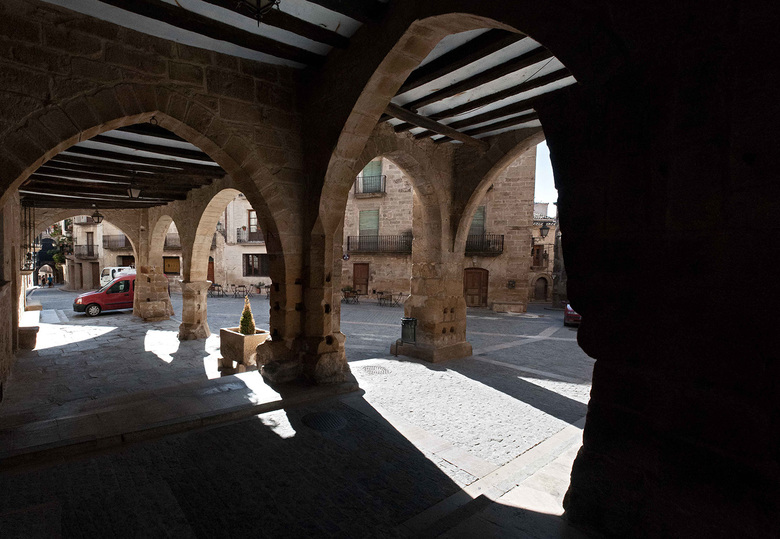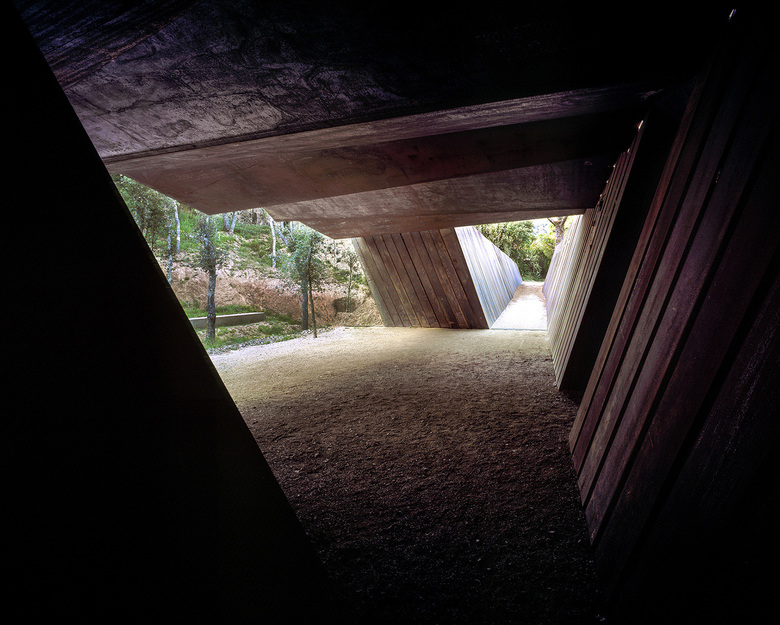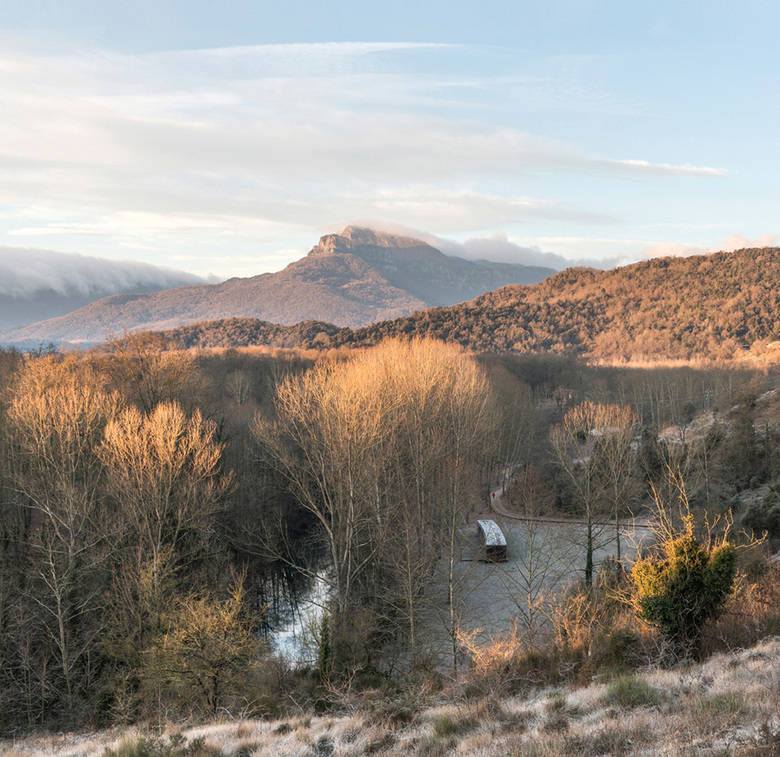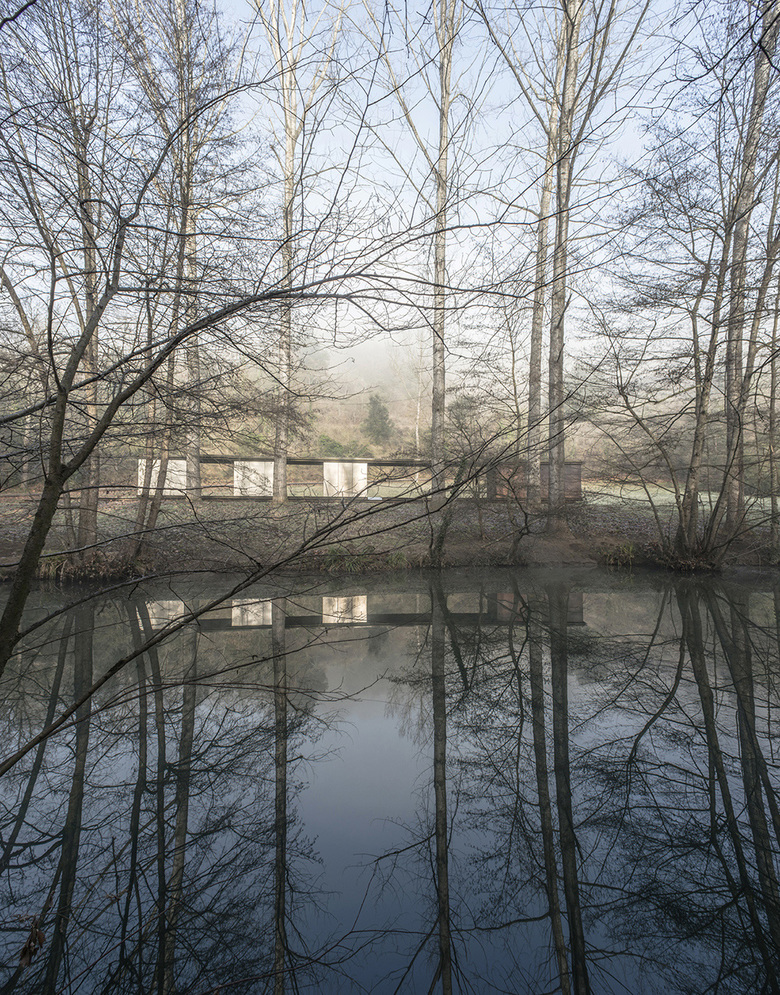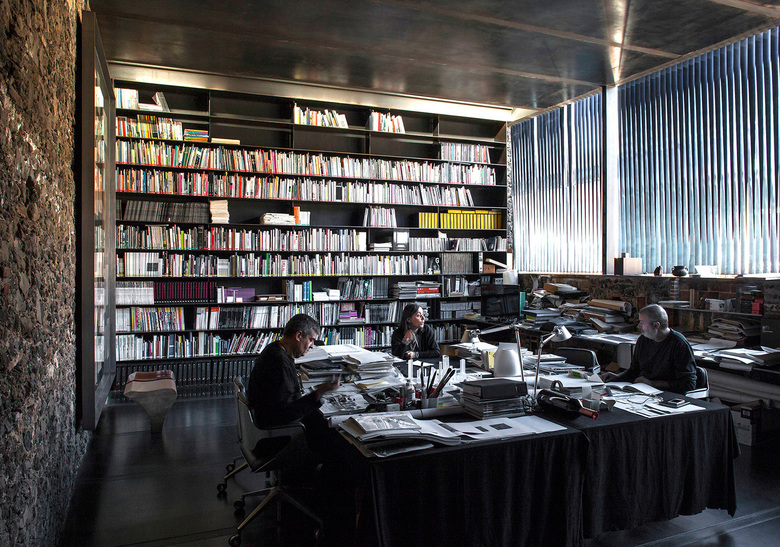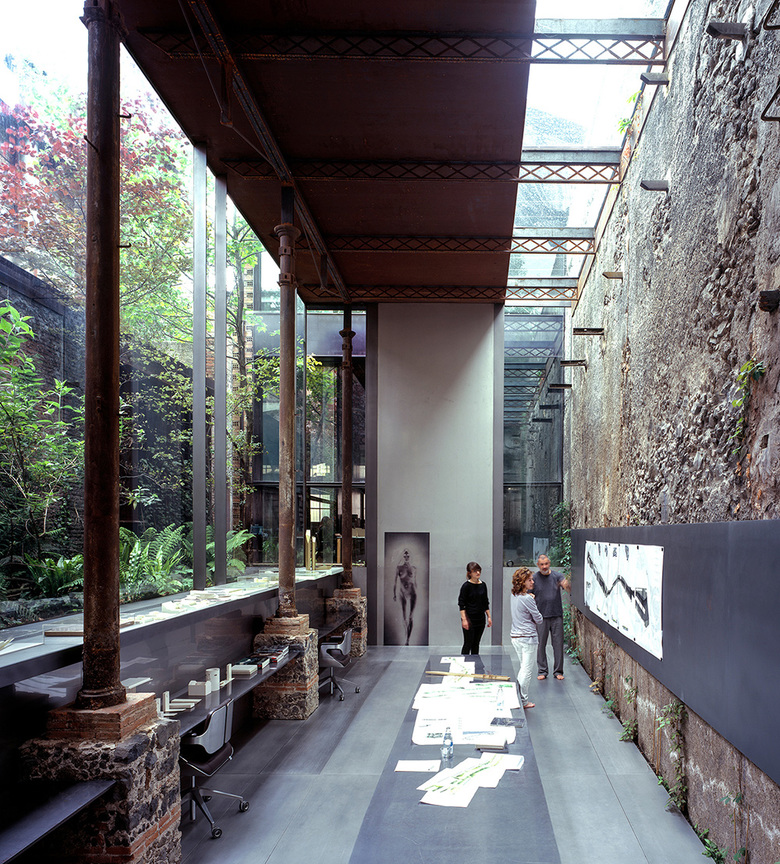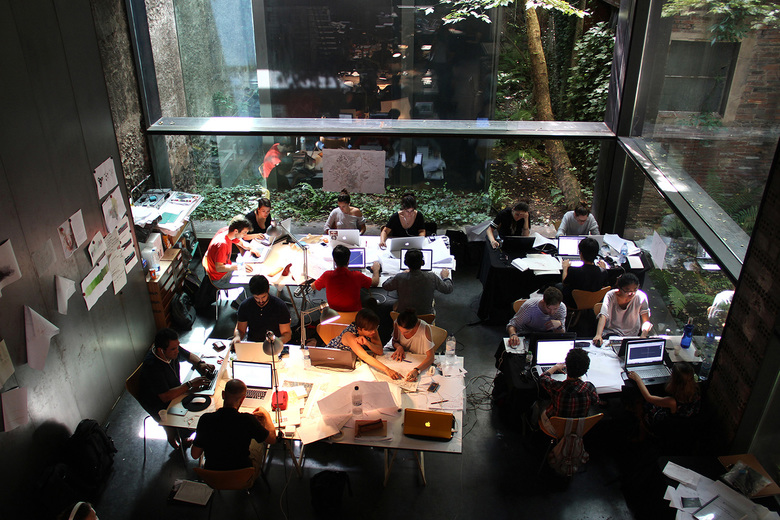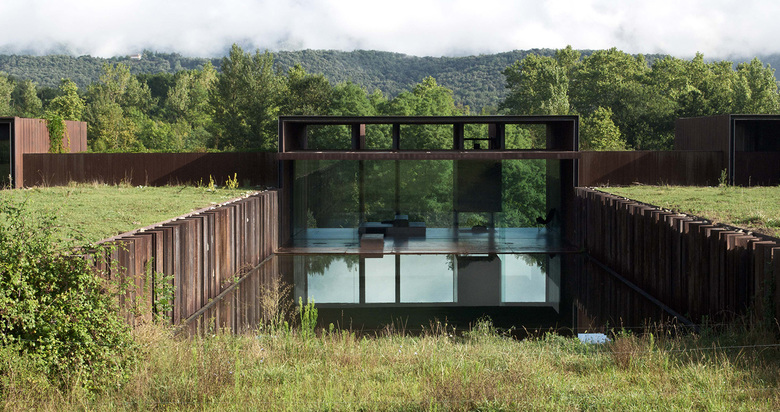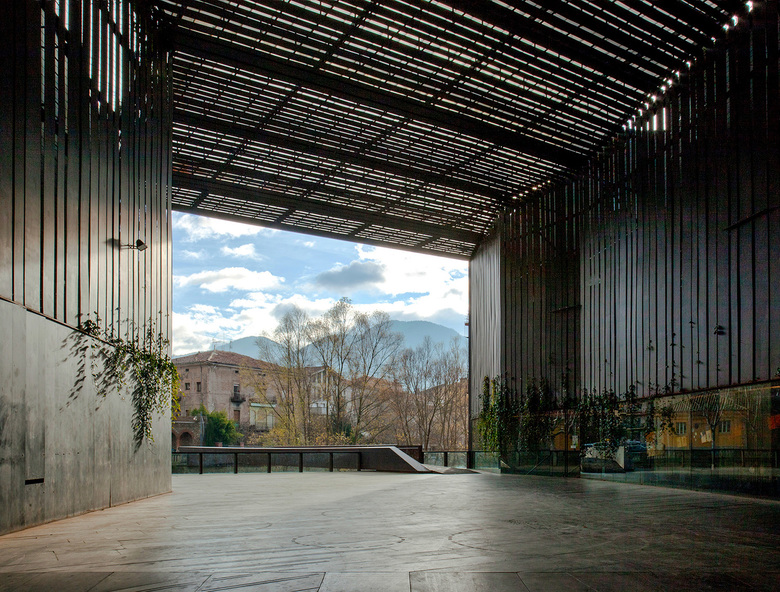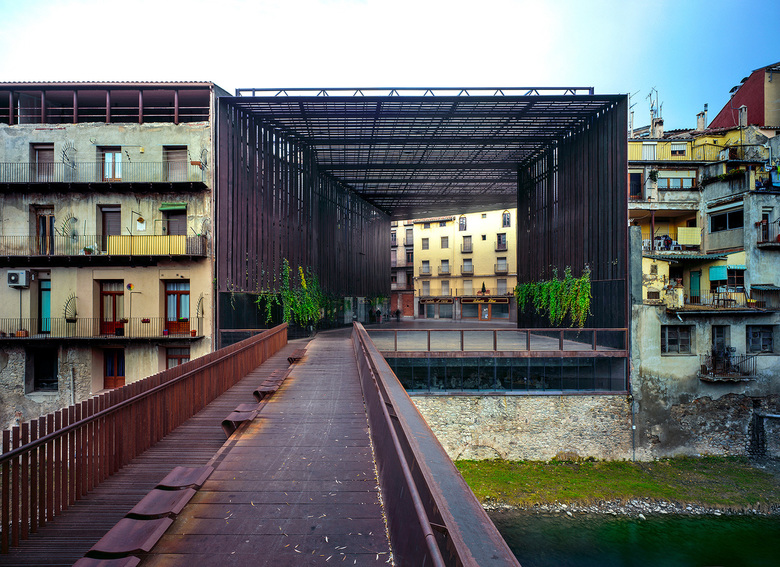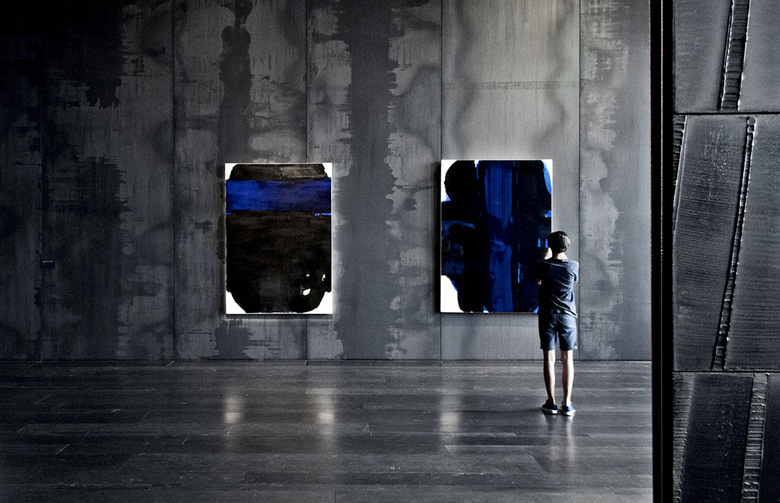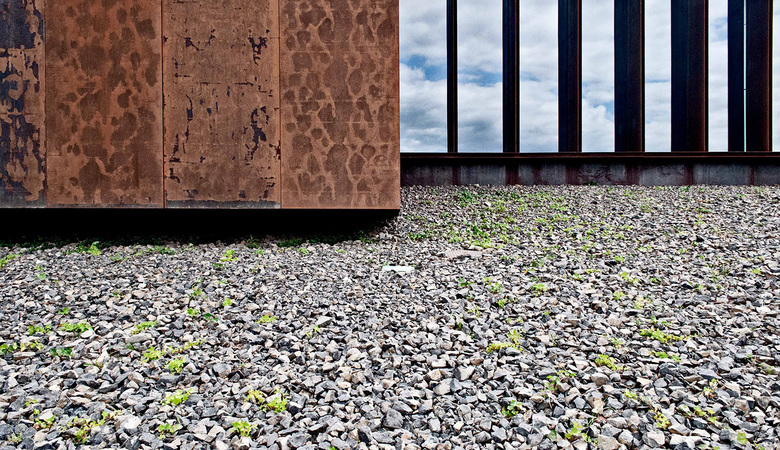An Introduction to RCR Arquitectes
On March 1st, the world of architecture celebrated RCR Arquitectes when it was announced the studio's founders, Rafael Aranda, Carme Pigem and Ramon Vilalta, are the 2017 Pritzker Architecture Prize laureates. For many people, though, RCR is a mystery. Jaume Prat, who has collaborated with the Catalan architects, provided us with an introduction to the studio's work.
The intrinsic values of each intervention by RCR Arquitectes include the aim of making the most of the location through each project's powerful capacity to emanate a centrifugal force, one that blurs lines to have a positive impact on the surroundings. And that is what makes their buildings anti-iconic, discreet, even hidden: they are not defined through their boundaries. Moving past them, the conditions of the location are allowed to enter, creating a dialogue with the place, redefining it, strengthening the positive and correcting any existing shortcomings. The studio's work has a holistic, systematic, purposeful vision. This is not a studio that limits itself to completing a commission within budget (although they do that too). This is a studio that expresses a way of understanding the world and life, that displays a cosmogony which aims to place human beings in resonance with an environment that is free of the noise, rush and stress of contemporary life.
The Pritzker to RCR (an acronym formed by the initials of the first names of the three friends who compose it: Rafael Aranda, Carme Pigem and Ramon Vilalta) represents the consecration of the legacy of Catalan architecture. This is defined by a series of values without which it is impossible to understand the work of RCR: a love for common spaces of logical and controlled dimensions, such as squares or markets; an interest in turning every public building into a civic center that transcends its primary function. Catalan architecture is sober, intense, expressed and structured using climate control mechanisms: porches, blinds, arched windows, a wide range of filters that allow living spaces so ambiguous that one does not know if it is in an interior with an exterior condition or the opposite: an exterior with an interior condition. These are the most characteristic spaces of RCR.
This Pritzker Prize is exceptional: for the first time, three architects receive the award in the same year. And that's because Rafael, Carme and Ramon have always worked together. The work carried out by the studio is completed as a group. The only way to properly award the prize was to give recognition to each member of the team. A way of consecrating architecture when understood as a joint effort. As collective intelligence. As a hive mind.
The jury's remarks highlight a series of values that paint an accurate picture of what the studio represents, as shown in this excerpt:
By taking these remarks as a structure for our reasoning, we can, with a few simple examples to illustrate these concepts, complete an introduction to RCR's work.All their works have a strong sense of place and are powerfully connected to the surrounding landscape. This connection comes from understanding – history, the natural topography, customs and cultures, among other things – and observing and experiencing light, shade, colors and the seasons.
Each building designed by these architects … is uncompromisingly of its time and place. … They understand that architecture and its surroundings are intimately intertwined … [All of its values] are powerful tools for creating lasting and meaningful spaces. For these reasons … and for their ability to express the local, but also the universal [RCR] are awarded the 2017 Pritzker Architecture Prize.
The place where the RCR architects live and work is Olot. The town is surrounded by extinct volcanoes, forming a substrate that has created a special microclimate with plant species that are unique to the Iberian Peninsula. The Olot volcanoes represent the urban condition. Working as an architect in Olot does not only mean becoming established in a small city: it also means accepting being far away from a faculty of architecture that might provide the studio with contributors. Working in Olot under these conditions means accepting that the work will involve transcending projects that are pedestrian, direct, modest, and almost banal.
The example that best illustrates this is the Pabellón del Baño. The pavilion was the idea of Olot Town Council, who wanted to put some small facilities in place so people could bathe in a stretch of the Fluvià, the river that crosses the city It includes toilets, a drinks machine, and a small changing room – little else.
RCR turned this small commission into the cornerstone for understanding all of their later work. The planning required an organization and use of the land as if dealing with a Greek temple: a construction that – strongly anchored in the surroundings by the curve of the river (echoed in the shape of the deck), by the riverside vegetation that regulates the structure, by the projections and footprints of the platform that mark the structure – is also a work of its own with its own unique characteristics. The location is brought together, strengthened and lifted by a pavilion that is just formal enough to have a decontextualized meaning. Steel was the chosen construction material, which is expressed for the first time to reach its full potential.
RCR sees steel as a material that can unify a construction on every scale, from the structure itself to the doors and windows, to the façades and furnishings, allowing the space to appear, and distilling it without it being obstructed by added ornamentation. Steel has the dual ability of aging, integrating into a place, and being seen as a material that has a degree of abstraction, possessing the same feeling of strangeness and artifice as the white marble of a Greek temple.
The history of a place serves as material for RCR's projects. Laboratorio Barberí, the studio's headquarters, is located in the old foundry that stood there before. The floor surface is made of the steel sheets and bars found at the location. The empty spaces left by the foundry ovens have been preserved, as well as the soot on the walls and even the existing holes in the roof. New features have been superimposed on the old, adapted and accommodated to take advantage of both the memory of the factory and its state as an inhabited ruin. All the layers of the past are traceable and visible at the same time, in a space that constantly adapts to the needs of the studio, the time of the day and the passing of the seasons.
The topography is used by RCR as a positive factor that enhances the value of their buildings. Topography provides structure. Topography provides order. Topography provides the roots and wings (burying and floating) that the architects define themselves by. Casa Horizonte takes advantage of the outcrop on which it sits to create living spaces that are simultaneously buried one and a half meters down (to give a feeling of shelter in a house with two sides that are entirely glass) and floating between the treetops.
This means of taking advantage of the topography resulted in a construction that is simultaneously buried and floating, and gave rise to spaces as beautiful as the Casas de la Fosca project. A buried ground floor takes advantage of the dividing walls between houses to completely free the structure, leaving it as a vacuum activated by the trunks of the pine trees. The living spaces snake through the tops of the existing pines, which are used here as light deposits and solar filters that provide some privacy to the different rooms between them.
The customs of public life on the streets, this way of using public space, is characteristically Catalan, and is condensed and crystallized in the void created in Espacio la Lira in Ripoll, which is built on the footprint left behind by a burned theatre lined simply throughout with steel. An eccentric bridge creates a new flow from the old city to the market, and is compatible with any possible use for the space. It integrates and reinforces the existing traffic in a way so natural that the bridge seems like it has always been there. Plants are slowly creeping their way over the structure – in ten years the space will be even better.
Culture is questioned, criticized and reformulated in each one of the houses, the true laboratories for experimentation for the team. Living in a home built by RCR means having an appreciation for the world around you. It means rethinking concepts such as comfort, intimacy and the way of moving around your home. It means paying attention to daily habits, transitions and the passage of time. Houses built by RCR offer an architectural style that even transforms into a new category: living in the cracks on the façade. Windowed patios separate rooms. The concept of indoors and outdoors is systematically questioned through the intelligent use of technology, making it possible to literally remove the façade of the building, as shown in projects such as Casa Horizonte and Casa Entremuros. The latter is the most radical commission undertaken by RCR, in which a family lives under a single roof in a void space made up of platforms that are furnished in different ways according to the habits of the inhabitants. Nestled tightly against the street and open to the garden, the house is an inhabited outdoor space.
Lastly, RCR has international ambitions. The studio's new projects, three quarters of which are international, allow the studio to export its unique way of understanding architecture to wherever they are invited: expressing the local and the universal. From the headquarters in Olot to Dubai, Belgium and France; their understanding of the place results in Barcelonan projects in Barcelona, French projects in France and Belgian projects in Belgium.
RCR is one mind with three bodies, a studio that has shared the same intention since it was founded and, thanks to this, has built an exciting and poetic way of understanding architecture.
And they are now entering a new phase – for many years to come.
Jaume Prat (Barcelona, 1975) has been an architect with ETSAB since 2002 and received his master’s degree in architectural theory and practice from UPC in 2009. He has collaborated with architects Josep Lluís Mateo, Louis Comerón Graupera and RCR Arquitectes, and has had his own studio with Montserrat Farres and Merwan Chaverri since 2002. He is co-author of a collection of Scalae ebooks, author of one of the volumes, author of Digital architecture guide of COAC and the city of Barcelona, among other publications, and author of the blog Arquitectura entre altres solucions. He was co-curator of "Aftermath, Architecture beyond Architects," the Catalan Pavilion at the 2016 Venice Architecture Biennale.

